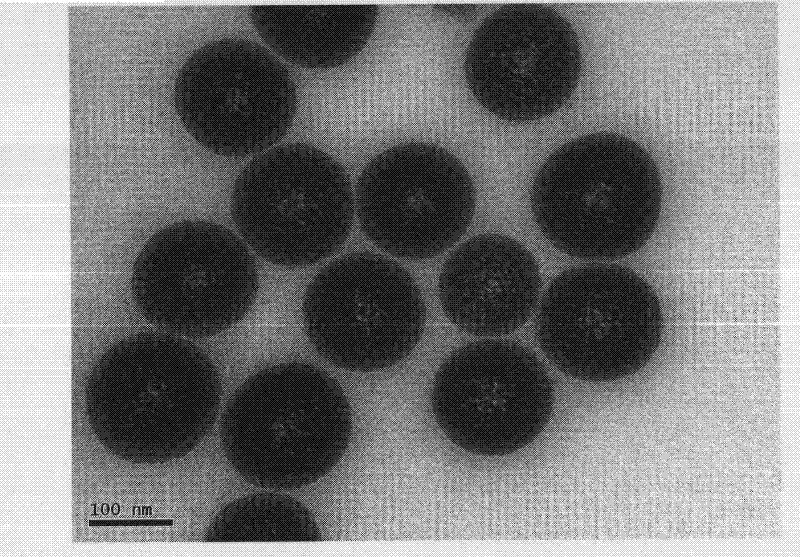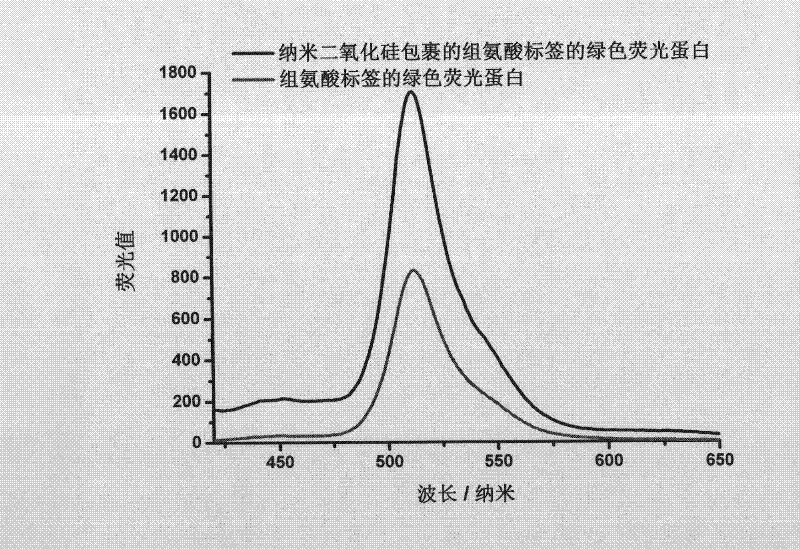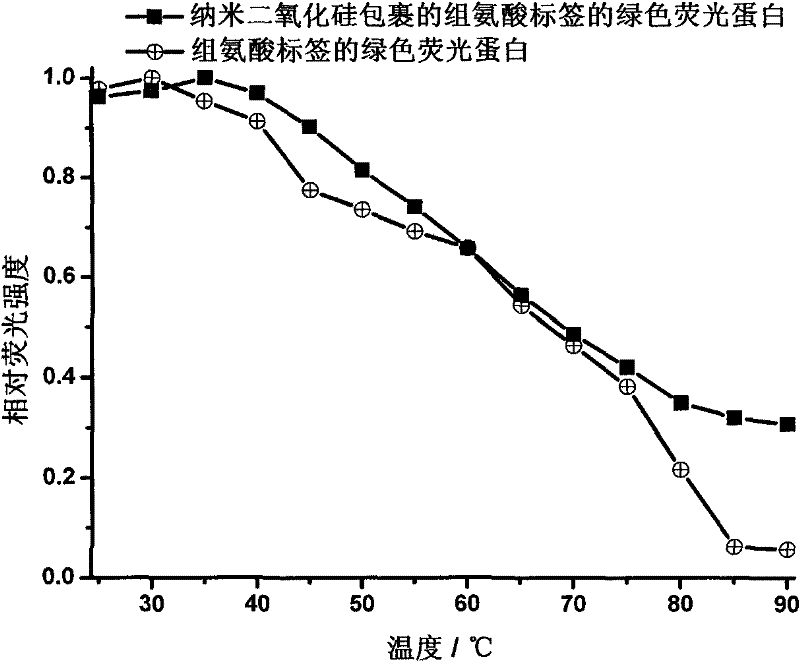Method for packing histidine-tagged protein with nano silica
A nano-silica, histidine-labeled technology, applied in the preparation methods of peptides, chemical instruments and methods, organic chemistry, etc., can solve the problems of changing the chargeability of proteins, low encapsulation efficiency, and easy leakage of nano-silica. , to achieve good thermal stability, not easy to enzymatic hydrolysis, good stability
- Summary
- Abstract
- Description
- Claims
- Application Information
AI Technical Summary
Problems solved by technology
Method used
Image
Examples
Embodiment
[0021] Take histidine-tagged green fluorescent protein as an example. Mix 7.5 ml of cyclohexane, 1.77 ml of polyethylene glycol octylphenyl ether, and 1.8 ml of n-hexanol, add 300 μl of a mixture of calcium chloride and histidine-tagged green fluorescent protein, and then add 100 Microliter tetraethyl orthosilicate, stir evenly with magnetic force, and finally use 60 microliters of ammonia water to initiate polymerization. After stirring and reacting at room temperature for 24 hours, add 20 milliliters of acetone to precipitate the nanospheres, wash several times to remove impurities such as surfactants, and you are done. Nano-silica particles containing histidine-tagged green fluorescent protein were obtained.
[0022] The transmission electron microscope (TEM) diagram of the nano-silica particles comprising hischloroic acid-labeled green fluorescent protein obtained in this embodiment is shown in figure 1 .
[0023] from figure 1 It can be seen that the nano-silica partic...
PUM
 Login to View More
Login to View More Abstract
Description
Claims
Application Information
 Login to View More
Login to View More - R&D
- Intellectual Property
- Life Sciences
- Materials
- Tech Scout
- Unparalleled Data Quality
- Higher Quality Content
- 60% Fewer Hallucinations
Browse by: Latest US Patents, China's latest patents, Technical Efficacy Thesaurus, Application Domain, Technology Topic, Popular Technical Reports.
© 2025 PatSnap. All rights reserved.Legal|Privacy policy|Modern Slavery Act Transparency Statement|Sitemap|About US| Contact US: help@patsnap.com



